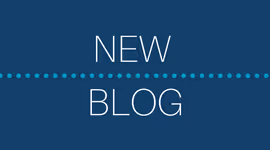Wrapping up

The year is rapidly drawing to an end, and so is this project. Despite the challenges we faced along the way, we are proud of what we have achieved, and excited about what this means moving forward. But first, let's look at what the need we are trying to meet is, and what we set out to achieve.
The problem we are trying to solve is a simple one: How can we provide timely notification of approaching hazards, such as tsunamis, cyclones or volcanic activity? Typically these hazards don't take us by surprise at a global level, although work can always be done to improve the rapid detection of these events. However, where we still really struggle is to get the warnings out fast and wide, especially in remote locations, or in complex situations where multiple disasters impact at the same time. The recent tragedy in Sulawesi, Indonesia, is an example of this: The earthquake that triggered the tsunami also disabled the cellular and land-line telephone networks, preventing the tsunami warning from reaching many people: There were no sirens to warn people to flee inland. It is exactly this problem of getting warnings quickly that we have been working to improve.
Our model is to combine a low-cost satellite receiver with the Serval Mesh, so that we can disseminate information and warnings in the most remote locations around the world. This combines the continuing availability of satellite services following earthquakes and similar events, with the resilience of the Serval Mesh that we built to survive such events on the ground. Really, the questions we wanted to answer, were whether it was possible to create such a system, and whether it could be cheap enough. We are pleased to have been able to answer these questions with a very firm yes".
To prove the feasibility, we integrated the Serval Mesh system with Othernet's low-cost satellite receiver. As we explained in previous posts, this was a bit of an adventure, because Othernet were forced to shutdown their original Pacific satellite service, so we had to work with them to reestablish a new service using their new Ku-band receiver hardware instead of the old C-band one. Basically, everything changed, and we had to scramble to get everything back up in time. In the end, we succeeded, and were able to demonstrate the ability to deliver critical alerts in as little as 11 seconds -- easily fast enough for tsunami warnings. Also, the accuracy required for pointing the receiver towards the satellite is quite relaxed, allowing it to have a high-probability of remaining correctly pointed even during an earthquake or cyclone. In fact, you can easily aim it, by just holding it in your hand and pointing it in about the right direction. We were able to do this using Othernet's <US$100 receiver hardware, with no additional parts, thus confirming that it could be done cheaply. That is, it is about 100x cheaper than a traditional tsunami early warning tower - that's a big deal, and one that has attracted quite a bit of interest from around the world, especially following the events in Sulawesi that served to remind many of the need in this space. Basically it can make the difference between impossibility and affordability for installing such a system with enough reach to protect the most vulnerable communities around the world. (Watch this video to learn more about the project)
So now we are at the point of having a demonstrated capability, which we need to advance into a functional product that can be deployed where it is needed. This means lots of discussions and meetings with potential backers to help bring this innovation to the field, so that it can start saving lives, sooner rather than later. It also means discussions with Pacific Island countries to help make sure that we have correctly understood the needs, and can continue to develop and refine this technology with the potential users, so that it can be as effective as possible. We kick off by meeting with the United Nations World Food Programme's Emergency Telecommunications Cluster regional gathering in Fiji in less than a week, and are excited about what is now possible!
Stay updated
Sign up for our newsletter to receive regular updates on resources, news, and insights like this. Don’t miss out on important information that can help you stay informed and engaged.
Related articles
.png)


Explore Elrha
Learn more about our mission, the organisations we support, and the resources we provide to drive research and innovation in humanitarian response.